Past WWCF
2016
Past WWCF 2016
Overview
- Date
- 20 October 2016
- Venue
- EXCO Room 325, Daegu, Republic of Korea
- Host
- Daegu Metropolitan City
- Participants
- Government officials, Water Specialists and Academics from 11 Cities in 11 Countries and 3 Organizations
- Program
-
- Keynote Speech : Great Water Cites ; Emerging Themes from a Global Dialogue
- Water Cities Roundtable : Cities & Water for sustainable Development
- Presentation : Water Industry policies, best practices and strategies of the world water cities
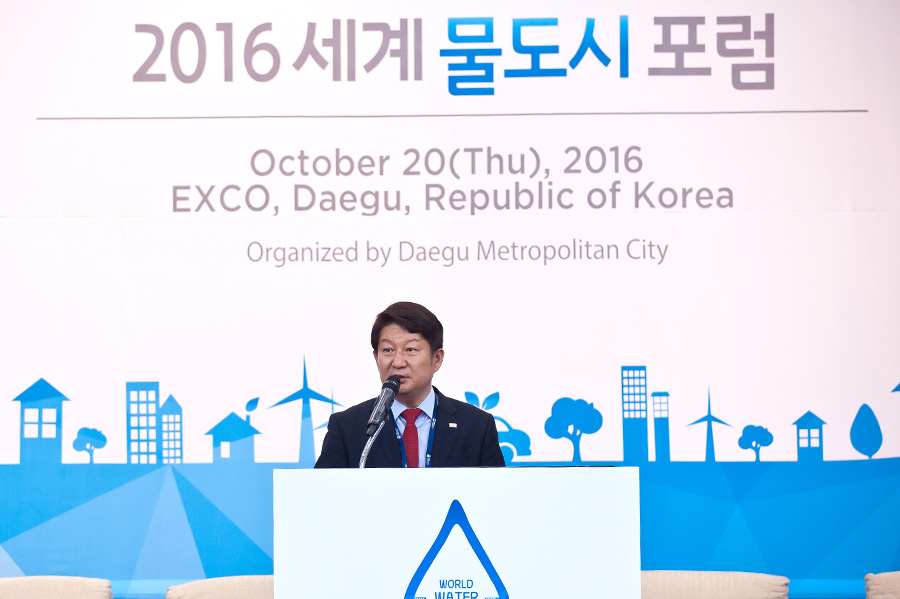
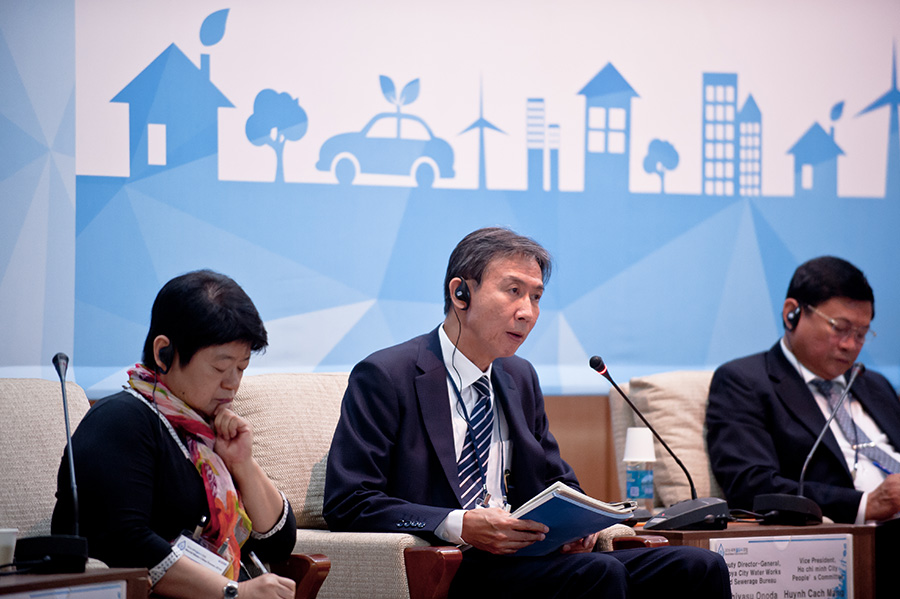
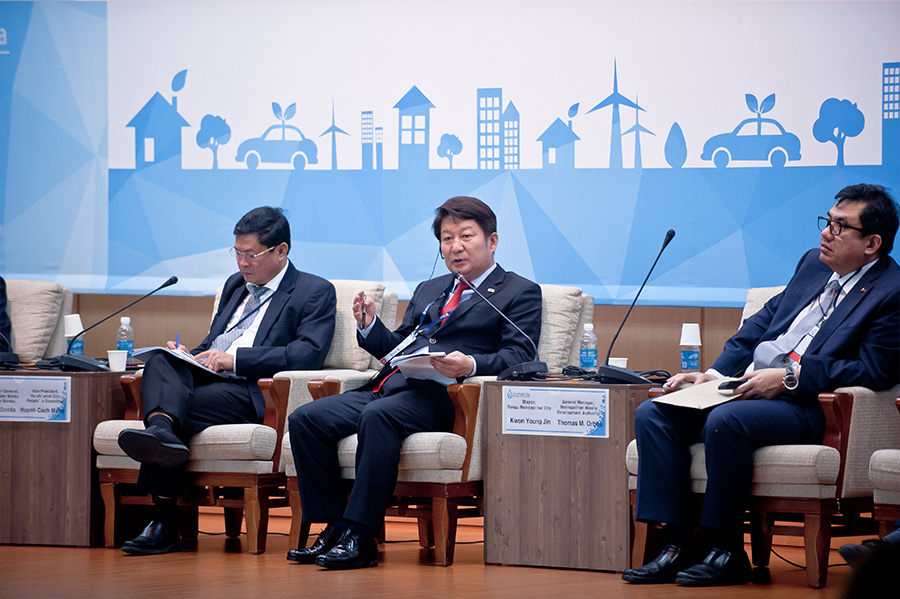
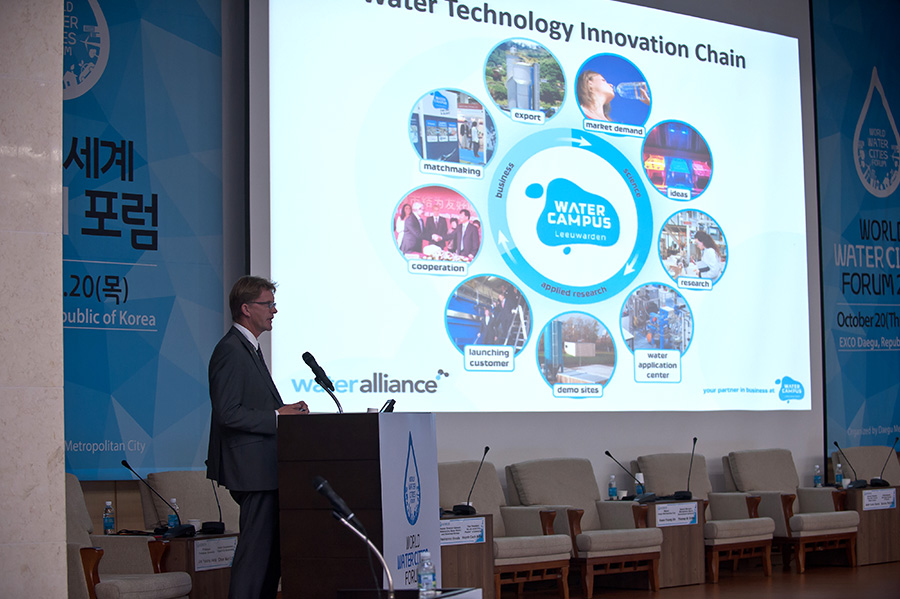
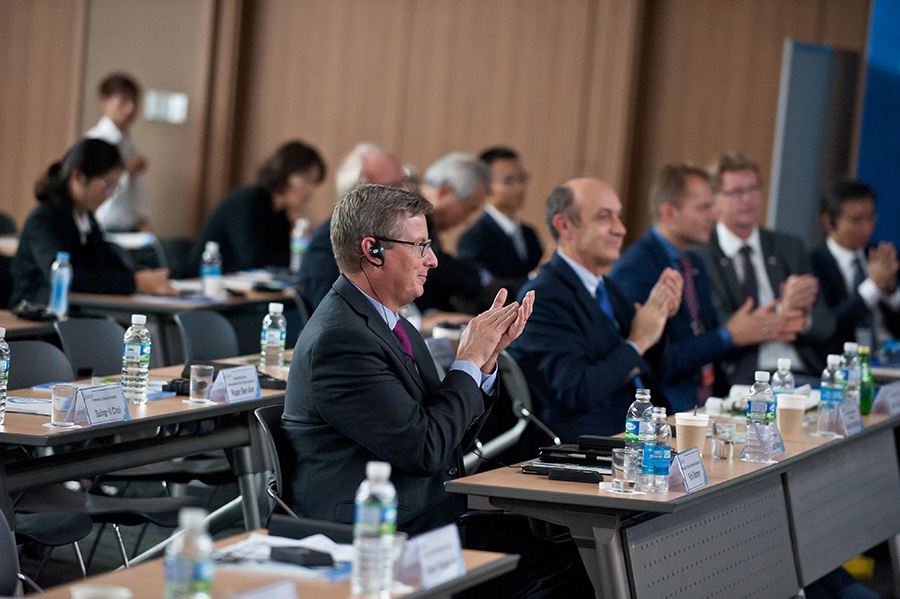
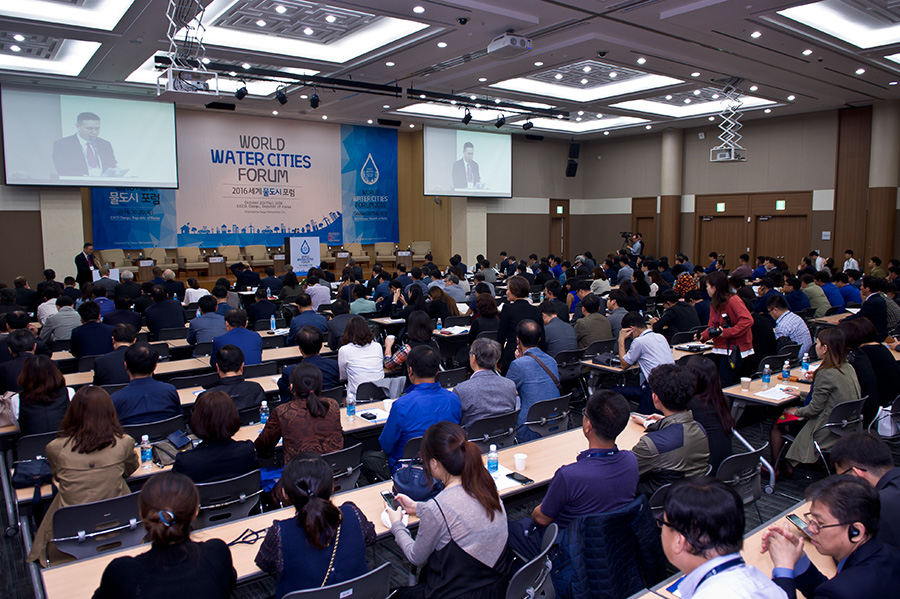
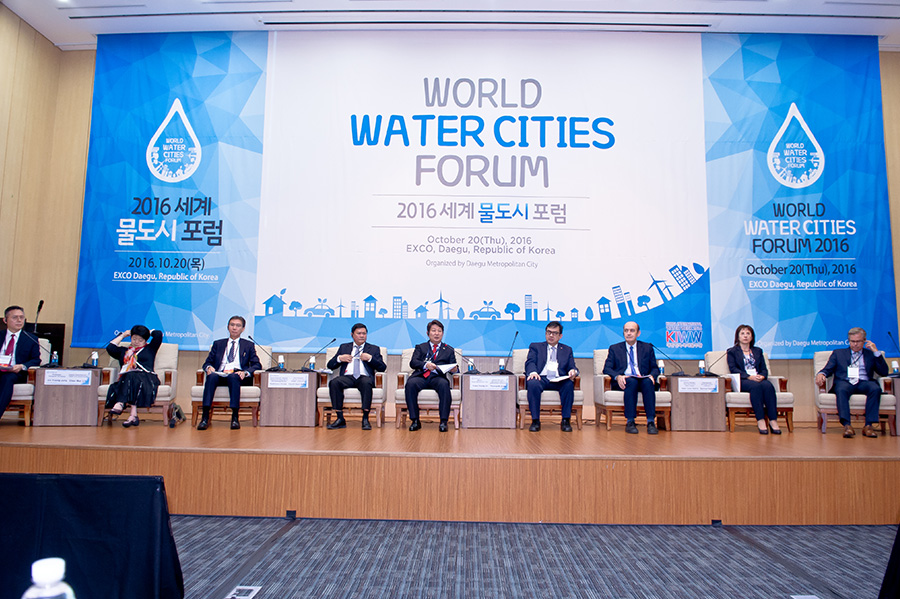
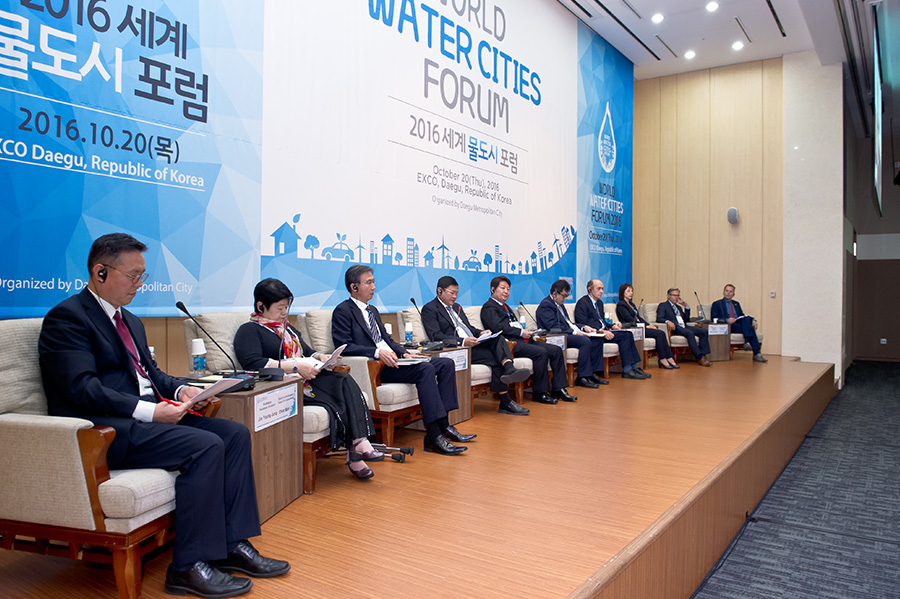
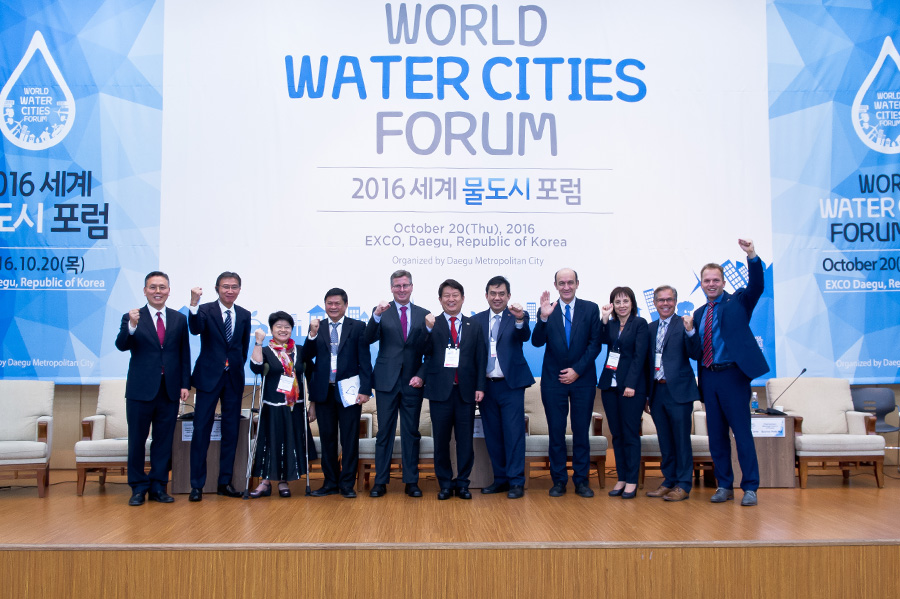
Introduction of participants in WWCF 2016
Daegu Metropolitan City - Republic of Korea


About the City/Organization
| Population | 2.5 million |
|---|---|
| Main industry/ economic sectors |
Water, futuristic vehicle, medical, IoT, robot, auto, machinery, metal industries |
| Source of water supply | Nakdong river, Unmun dam, Gachang dam, Gongsan dam |
| Website | www.daegu.go.kr/english/ |
Introduction of the City/Organization (focusing on water-related issues)
As Korea’s water hub, Daegu Metropolitan City fosters water industry through Korea Water Cluster, core infrastructure for innovative water technology development and commercialization. The city forges global water partnership to address global water issues by annually hosting the World Water Cities forum.
As a sustainable and ecological city, Daegu Metropolitan City has implemented the Nakdong River and urban stream restoration project and upgraded water treatment infrastructure from 1983 to 2018 with investment of USD 3.6 billion.
Since the city successfully hosted the World Water forum in 2015, the first national water industry cluster “Korea Water Cluster (KWC)” has been established on 650,000㎡ site in Daegu National Industrial Park with investment of USD 300 million. KWC is equipped with water industry promotion facilities, demonstration facilities and industrial complex. Daegu provides water companies in the KWC with one-stop support ranging from water technology R&D, verification/certification to global market expansion. In order to address global water issues, Daegu has implemented Water Treatment Facility Donation programs for the developing countries in collaboration with 16 KWC’s water companies. In 2017, those companies voluntarily donated water treatment facility to Vinh Long province, Vietnam. The water treatment system enabled 500 households to have access to clean and safe water.
Daegu City has also participated in the government's ODA project to create a Water Treatment Techno Park in Colombia with a total budget of USD 9.3 million, and is seeking to build water-related facilities, nurture manpower, transfer technology and enhance cooperation between Korea and Columbia from 2019 to 2022. In an effort to enhance the global partnership, Daegu is annually hosting the Korea International Water Week (KIWW) and World Water Cities forum (WWCF). In addition, IWRA’s ⅩVII World Water Congress, the largest water resources event, will be held in Daegu, Republic of Korea from May 11 to 15, 2020.
Fryslân - Netherlands

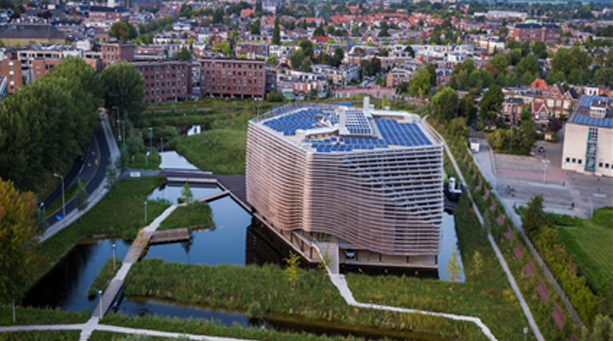
About the City/Organization
| Population | 650.000 |
|---|---|
| Main industry/ economic sectors |
Agriculture and services |
| Source of water supply | groundwater |
| Website | www.fryslan.frl |
About the Organization
| Name | Province of Fryslân |
|---|---|
| Established | 1814 |
| Type | Regional government |
| Headquarters | Leeuwarden |
| Membership |
Introduction of the City/Organization (focusing on water-related issues)
Fryslân is one the twelve provinces in the Netherlands. The province is a general authority and therefore responsible for a large number of policy fields such as traffic and transport, nature and landscape, town and country planning, public housing, recreation and tourism, environment, welfare, public order and security, water management, economic affairs and international cooperation. From the year 2000 the province of Fryslân has chosen for a smart specialization: a knowledge based economic sector in the field of water technology.
Within this framework a water technology programme has been developed with the following key elements: unify all relevant stakeholders; intensify research and development; create an innovation eco-system to stimulate new products and services (to create jobs and export); create a playground for experiments. Over the years the results of this programme have been numerous projects with a turnover of over € 400 million financed by a mix of private and public (regional, national and EU) funding.
Ho Chi Minh City - Vietnam
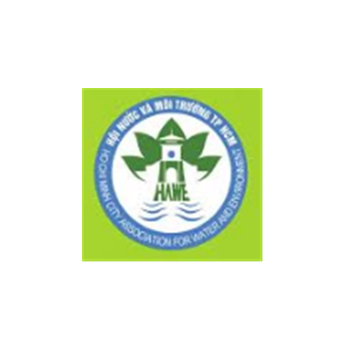
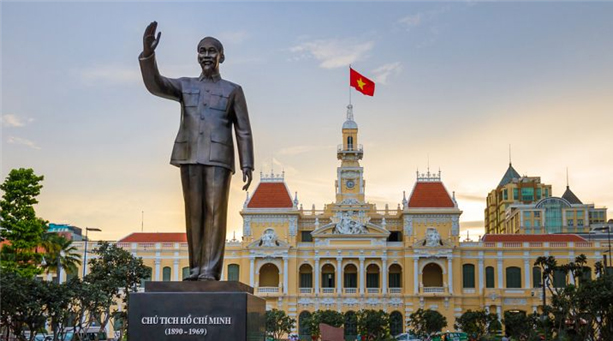
About the City/Organization
| Key summary | Ho Chi Minh City is the most populous city in Vietnam with a population of 8.4 million (13 million in the metropolitan area) as of 2017.[5] Located in southeastern Vietnam, the metropolis surrounds the Saigon River and covers about 2,061 square kilometres (796 square miles). From 1955 to 1975, Saigon was the capital of the Republic of Vietnam, commonly known as South Vietnam.[6] Ho Chi Minh City is the financial centre of Vietnam and is classified as a Beta+ World City by Globalization and World Cities Research Network.[7] It is home to the Ho Chi Minh City Stock Exchange, the largest stock exchange by total market capitalization in Vietnam and the headquarters of many national and international banks and companies. |
|---|
Metro Manila - Philippines
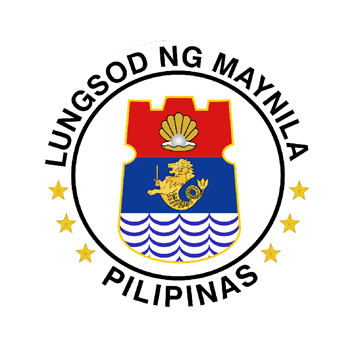
About the City/Organization
| Key summary | - The capital of the Philippines and one of the 30 most populous metropolitan areas in the world, Metro Manila, along with Metro Cebu, is one of the two metropolitan cities in the Philippines. - MWSS was established in 1971 in accordance with the provisions providing clean drinking water to the residents and the purpose of proper sanitary sewage treatment facility. - Maintenance of water resources and research, such as supply management business. |
|---|
Montpellier Méditerranée Métropole - France

About the City/Organization
| Population | 458 000 (2015) with an urban area of 1 000 000 |
|---|---|
| Main industry/ economic sectors |
Innovation, Health, Numeric, Agroecology, Wine and Tourism… |
| Source of water supply | The main drinking water resource comes from a strategic karst aquifer sources (for more than half of the inhabitants), complete by two drillings and is supplemented by a resource exogenous to the territory (the water of the Bas-Rhône which requires more treatment). |
| Website | www.montpellier3m.fr/ |
Introduction of the City/Organization (focusing on water-related issues)
Montpellier Metropole, lies between the Mediterranean Sea and the Cevennes foothills. Its geology is typical of the Mediterranean regions, ranging from karst reliefs to an alluvial plain, bordered by a barrier beach. The territory is crossed by two coastal rivers. The coastline, once swampy, is dotted with ponds. The climate is marked by an alternation of drought and Cevennes episodes, causing floods. The central and coastal part is now largely urbanized and the aquatic environments have been largely artificialized.
In a context of climate change, the metropolis must take up 5 challenges:
- Restore degraded environments
- Save and share water resources equitably,
- Protect aquatic resources and environments in good condition,
- develop solutions based on nature and limit soil artificialization
- develop a memory and culture of water
Nagoya - Japan

About the City/Organization
| Key summary | Nagoya is the largest city in the Chūbu region of Japan. It is Japan's fourth-largest incorporated city and the third-most-populous urban area. It is located on the Pacific coast on central Honshu. It is the capital of Aichi Prefecture and is one of Japan's major ports along with those of Tokyo, Osaka, Kobe, Yokohama, Chiba, and Kitakyushu. It is also the center of Japan's third-largest metropolitan region, known as the Chūkyō metropolitan area. As of 1 October 2019, 2,327,557 people lived in the city, part of Chūkyō Metropolitan Area's 10.11 million people.[4] It is also one of the 50 largest urban areas in the world. |
|---|
Orange County - USA

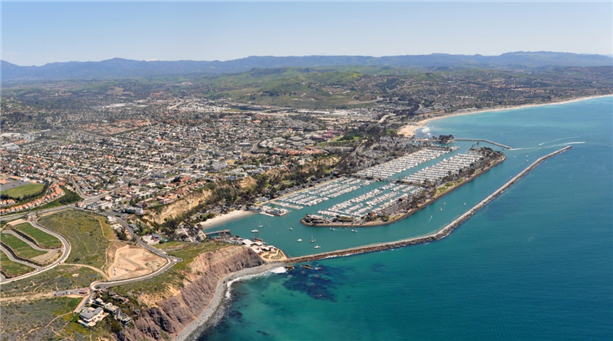
About the City/Organization
| Key summary | The 'Orange County Water District is a California special district that manages the groundwater basin beneath central and northern Orange County, California. The groundwater basin provides a water supply to 19 municipal water agencies and special districts that serve more than 2.4 million Orange County residents. The Orange County Water District's service area covers approximately 350 square miles and the District owns approximately 1,600 acres in and near the Santa Ana River, which it uses to capture water flows for groundwater recharge. Additionally, the Orange County Water District owns approximately 2,150 acres of land above the Prado Dam in the Prado Reservoir and uses that land for water conservation, water storage and water quality improvements.[1] The water district's administrative offices and the Groundwater Replenishment System facilities are located in Fountain Valley, while it also operates various groundwater recharge facilities located in Anaheim and Orange. |
|---|
Plovdiv - Bulgaria
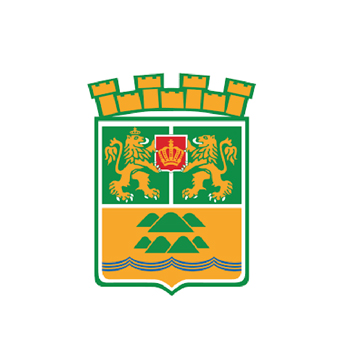
About the City/Organization
| Key summary | Plovdiv is the second-largest city in Bulgaria after Sofia, with a city population of 346,893 as of 2018 and 675,000 in the greater metropolitan area. Plovdiv is the culture capital of Bulgaria. It is an important economic, transport, cultural, and educational center. There is evidence of habitation in Plovdiv dating back to the 6th millennium BCE, when the first Neolithic settlements were established. It has been considered to be one of the oldest cities in the world. During most of its recorded history, Plovdiv was known in the West by the name Philippopolis after Philip II of Macedon conquered the city in the 4th century BCE. The city was originally a Thracian settlement[4] and subsequently was invaded by Persians, Greeks, Celts, Romans, Goths, Huns, Bulgars, Slavs, Rus people, Crusaders, and Turks. On 4 January 1878, at the end of the Russo-Turkish War (1877–1878), Plovdiv was taken away from Ottoman rule by the Russian army. It remained within the borders of Bulgaria until July of the same year, when it became the capital of the autonomous Ottoman region of Eastern Rumelia. In 1885, Plovdiv and Eastern Rumelia joined Bulgaria. Plovdiv is situated in a fertile region of south-central Bulgaria on the two banks of the Maritsa River. The city has historically developed on seven syenite hills, some of which are 250 metres (820 feet) high. Because of these hills, Plovdiv is often referred to in Bulgaria as "The City of the Seven Hills". |
|---|
Shenzhen - China
About the City/Organization
| Key summary | Shenzhen is a major sub-provincial city located on the east bank of the Pearl River estuary on the central coast of southern Guangdong province, People's Republic of China. It forms part of the Pearl River Delta megalopolis, bordering Hong Kong across the Sham Chun River to the south, Huizhou to the northeast and Dongguan to the northwest, and shares maritime boundaries with Guangzhou, Zhongshan and Zhuhai to the west and southwest across the estuary. Shenzhen's cityscape results from its vibrant economy — made possible by rapid foreign investment following the institution of the policy of "reform and opening-up" in 1979.[7] The city is a leading global technology hub, dubbed by media as the next Silicon Valley and China's Silicon Valley. It was one of the fastest-growing cities in the world in the 1990s and the 2000s,[13] and has been ranked second on the list "top 10 cities to visit in 2019" by Lonely Planet.[14] |
|---|
Taipei - Taiwan

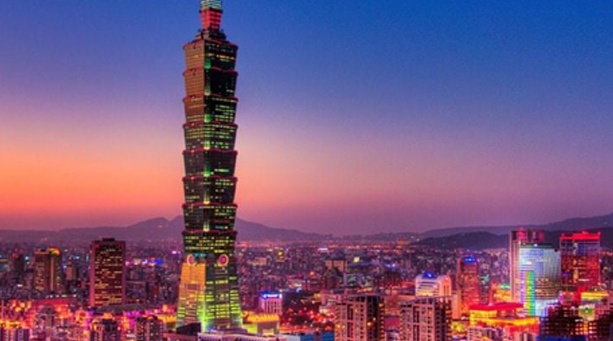
About the City/Organization
| Population | 2.667 million |
|---|---|
| Main industry/ economic sectors |
Taipei's main development fields include the information and communications technology, biotechnology, merchandising (wholesale/retail), financial services, and MICE industries. |
| Source of water supply | Taipei Water Department |
| Website | https://english.gov.taipei/ |
Introduction of the City/Organization (focusing on water-related issues)
Kumamoto City is located in the centre of the island in the southwestern part of the Japanese archipelago called, "Kyushu." We have a glorious view of Mt Aso to the east of the city, and to the west, the city faces the Ariake sea.
Kumamoto City is blessed with rich groundwater, and all the drinking water for our population of 740,000 is supplied with this natural spring water. It is a rare and unique case among Japanese cities with more than 500,000 residents that we are able to cover all of our water supply needs with groundwater. As such, Kumamoto City has been named ‘the Number One Groundwater City’ in Japan.Kumamoto is also a gourmet city with abundant good-quality food such as fruits, vegetables, beef and seafood thanks to the rich nature.
